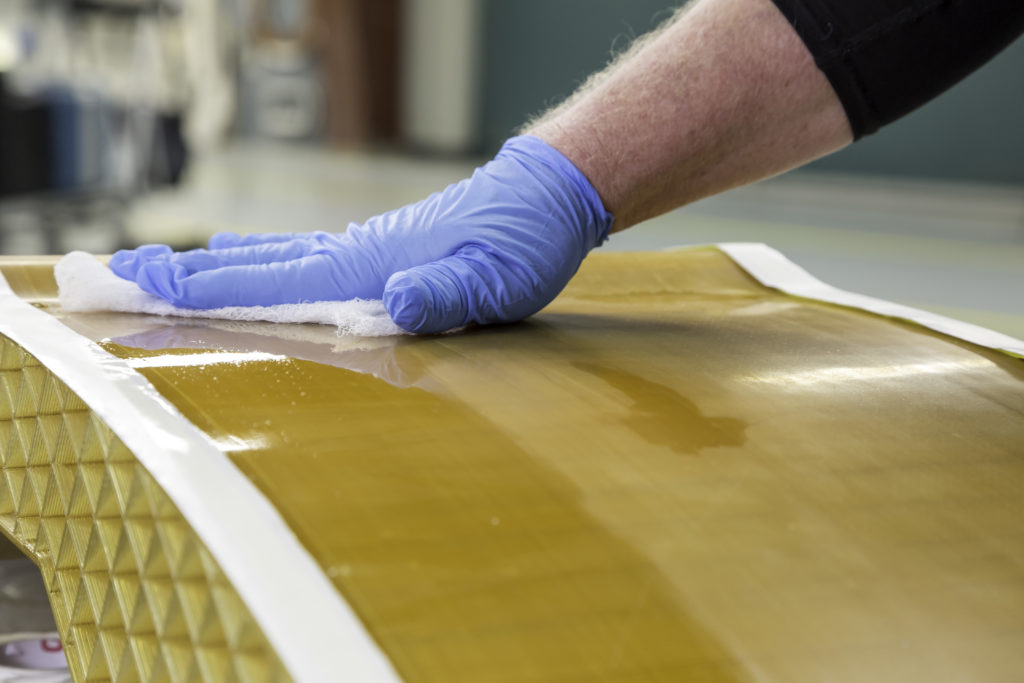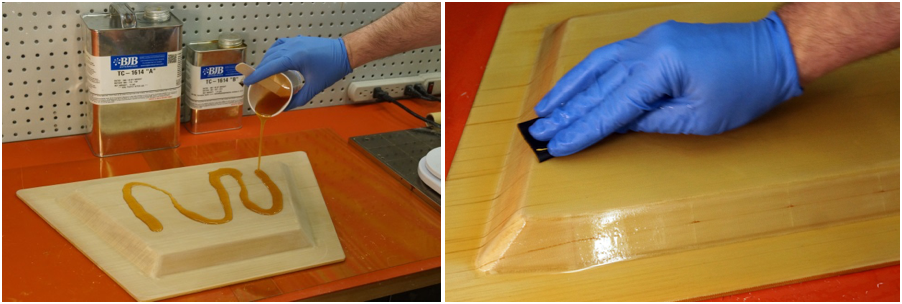
In this article, we will discuss the post-processing of 3D printed composite molds produced using FDM technology.
Conventional metal and FRP (fiber reinforced polymer) molds typically require post treatment after the initial forming or grinding process. The post-treatment steps include assembly of the backing or support structure, adding inserts/bushings, and often performing polishing to achieve the desired surface finish. FDM composite molds that are similar to conventional tooling techniques typically require some degree of post-processing, depending on the size, application, and complexity of the tool. The most common post-treatment operation for FDM composite molds is sealing.
The built-in FDM composite tool has inherent porosity (see Figure 1) and surface finish that is unacceptable for most composite part applications. Therefore, post-processing operations are often required to achieve the desired tool performance.

Figure 1: Graphical representation of the porosity generated by the FDM build process
Surface treatment:
Various methods can be used to improve the surface roughness of the FDM tool surface, including manual sanding, media blasting, tumbling and degreasing. Currently, the best practice to meet surface finish requirements (<64μinRa) and provide vacuum integrity is manual abrasion followed by epoxy sealant. Figure 2. Recommended sanding and sealing process detailed in Appendix B of FDM. Mold design guide. However, the basic method consists of two thin-coated, high-temperature epoxy sealants, each of which is lightly polished to maximize adhesion. After the second layer of epoxy, progressively finer grit sandpaper (120-800) is used to achieve the desired surface roughness. It is important to note that the goal of this process is not to get the layers out, but to fill the low points of the surface and remove any visible raised portions and maintain a smooth surface with integrity.

View FDM composite mold for epoxy sealer application (left) and manual sanding (right) post-treatment
Sealing method:
As noted above, the inherent porosity in FDM composite tools can be addressed by the use of epoxy sealants. Although Stratasys typically uses a tool epoxy called BJBTC-1614, a variety of epoxy resins can be used as long as the material selected can withstand the desired curing process.
Other methods of addressing surface treatment and sealing requirements include the use of adhesive supported FEP films such as Tooltec® and Toolwright from Airtech International, Inc. FEP films are generally faster and more convenient than conventional epoxy sealants. However, they may be difficult to apply to composite profiles, and they are generally not as strong as epoxy seals and need to be replaced after several cycles. The unique properties of FEP films make them ideal for use in repair tools and other applications where several components are required.
Similar to conventional tools, FDM composite molds typically require some degree of post-treatment. Stratasys constantly evaluates alternative post-processing methods and sealers to improve performance and streamline the finishing process. Degreasing coating processing is an alternative process that has shown some advantages.
Toilet Paper,Jumbo Toilet Rolls Wholesale,Four Ply Toilet Paper,Compact Toilet Paper
DONGGUAN YEE HUP TRADING CO,.LTD , https://www.dgyeehupack.com